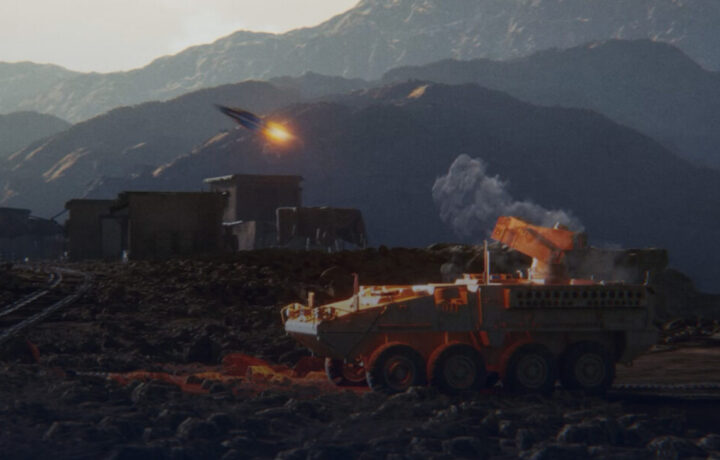Huntsville, AL-based BlueHalo announced recently that it had completed the critical milestones in the development of its Freedom Eagle (FE-1) missile, just weeks after it had been selected as one of two contractors chosen to continue the development of the United States Army’s Next-Generation C-UAS Missile (NGCM) program. The Army has to develop a small interceptor missile that could shoot down unmanned aerial systems (UAS).
BlueHalo revealed the FE-1 NGCM last October in response to the Department of Defense’s request for new C-UAS missile technology. In June, the U.S. Army Combat Capabilities Development Command Aviation & Missile Center’s (CCDC AvMC’s) Aviation & Missile Technology Consortium down-selected BlueHalo and Raytheon subsidiary RTX to move forward with the NGCM’s development.
According to a report published in June, the U.S. Army’s C-UAS process now employs active defense measures in a process with four distinct elements: detect, identify, decide, and defeat. The NGCM is the key component of the “defeat” element.
FE-1 Testing Has Been Completed
The FE-1 has undergone multiple rounds of testing, which included the successful firing of its dual-thrust, solid rocket motor.
“On battlefields around the globe, drones are proving to be one of the most rapidly evolving threats to national security, demanding the accelerated development of innovative technologies for continued all-domain dominance,” said Jonathan Moneymaker, BlueHalo chief executive officer. “Our forward-thinking investments and collaborative efforts have positioned BlueHalo as a trusted and viable alternative missile provider, ready to outpace these emerging threats with superior technology while expanding the solid rocket motor industrial base and creating a more robust national security supply chain.”
The Alabama startup, which specializes in solutions and technologies for space and ground systems, was founded in 2019. Its FE-1 platform has been touted to expand the capabilities and increase lethality and range against Group 3 UAS and other larger air threats. In addition, BlueHalo has said it can be seamlessly integrated with existing infrastructure and Command and Control (C2) systems.
The BlueHalo has further been described as a “low-cost effector with superior maneuverability” that can be used to defeat an array of Short-Range Air Defense (SHORAD) threats. The company has also produced the LOCUST Directed Energy Laser Weapon System (DELWS), which has been successfully delivered and operationally deployed to identify, track, and engage a wide variety of targets with its hard-kill High Energy Laser.
“With FE-1, we’re providing warfighters with increased range, reduced time-to-target, and rapid launch capabilities,” added James Batt, BlueHalo’s chief growth officer. “With the addition of this kinetic offering to our proven C2, Directed Energy, and RF-based C-UAS solutions, BlueHalo is proud to deliver ironclad, industry-leading end-to-end layered air and missile defense.”
Protecting America’s Warfighters
The importance of the NGCM has increased significantly since the start of the war in Gaza nearly 10 months ago, with U.S. forces in the Middle East coming under attack from small UAS. The U.S. Army had also increased its drone budget based on how small commercial off-the-shelf drones have proven to be game changers in the war in Ukraine, where both sides have employed the platforms to strike tanks, aircraft on the ground, and even forward positions.
Kyiv has used drones to strike Russian targets hundreds of miles from the frontlines. Efforts are underway to counter the drones – and that has included radio jammers and even lasers. It would seem that small NGCMs are now part of a much bigger picture.
“We’ve already reached the point in FE-1’s development where we are firing rocket motors because we identified the need early and have the capability, know-how, and agility to develop and deliver a technically superior solution to the frontlines quickly,” said Jimmy Jenkins, president of BlueHalo Armed Forces Portfolio, and former air defender in the U.S. Army. “We’re proud to work with AMTC and PEO Missile and Space to rapidly bring this critical capability to the warfighter.”




